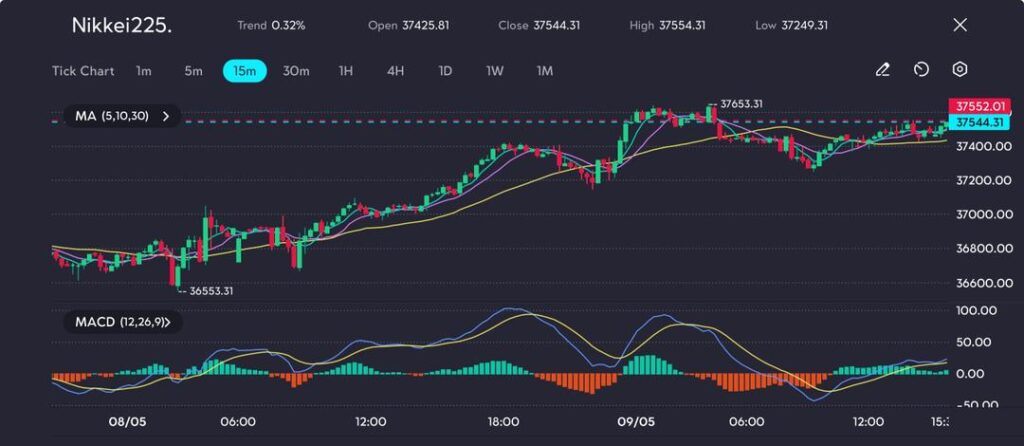Canada’s participation rate rose to 65.3% in April, slightly higher than the previous month’s 65.2%. This increase shows a minor change in the number of people actively involved in the workforce.
In contrast, the EUR/USD currency pair managed to stabilise above 1.1250 despite potential weekly losses. The pair found support as traders became cautious before the upcoming US-China trade talks.
Gbp Usd Momentum
Meanwhile, GBP/USD gathered momentum, noting an upward movement toward 1.3300. This occurred as market attention shifted due to recent trade discussions and the Bank of England’s recent policy decision.
The gold market, on the other hand, observed increased interest, maintaining prices above $3,300. Escalating geopolitical tensions were a contributing factor, drawing attention as a safe-haven investment.
These movements, when taken together, suggest a market leaning more towards defensive positioning, but with measured optimism in select areas. The slight increase in Canada’s participation rate – from 65.2% to 65.3% – indicates a small uptick in those either working or actively seeking work. It’s not a large movement, yet it’s still enough to point to ongoing tightness in the country’s labour conditions, which, from our perspective, can serve as a modest indicator of economic resilience. The labour market hasn’t shifted dramatically but hasn’t loosened either. For those of us watching options on Canadian data-sensitive assets, it’s worth noting that such a trend might bolster support for the loonie in the near term, especially if wage growth or hours worked accompany this with strength.
Eur Usd Stability
Looking toward the EUR/USD, we’ve seen the pair hold ground above 1.1250, even though there’s been pressure on the euro. Stability at that level points more to dollar hesitancy than euro strength. Market indecision ahead of upcoming trade conversations between Washington and Beijing implies a broader reluctance to take on risk. There are no signs of fresh optimism here – only caution embedded in current pricing. From where we stand, protective positions or range-bound strategies may be more appropriate while the market waits on outcomes from geopolitical catalysts.
Sterling, meanwhile, picked up steam against the dollar, pushing toward that 1.3300 mark. This bounce is partially linked to a shift in focus – nervousness over trade has been temporarily overtaken by reactions to the central bank’s latest guidance. What’s worth watching is the affirmation seen in recent UK data releases, which offered few surprises, something markets tend to reward with calm. In short, there’s been enough stability out of Threadneedle Street to allow for modest gains, though we wouldn’t count on that path continuing without sharper economic developments. We may find opportunities here in medium-dated contracts, with implied volatility levels still pricing in caution.
Elsewhere, in the commodities space, gold’s ability to remain above $3,300 hasn’t gone unnoticed. Fears linked to rising geopolitical friction are once again fuelling the asset’s role as a stabiliser in turbulent times. When uncertainty takes hold, we’ve historically seen gold behave predictably – which explains why it continues to attract attention. While it may look overbought to some, positioning data shows there’s still room for accumulation on temporary dips. For us, this presents a directional opportunity should another round of risk aversion drive further upside, particularly in structured trades.
In short, patterns this week are characterised less by enthusiasm and more by restraint, driven primarily by caution ahead of external political developments and the still-lingering echoes of central bank guidance. While economic data has been mixed, it hasn’t braced markets for volatility, making derivatives an efficient vehicle for managing smaller, targeted exposures rather than outsized directional bets.

















